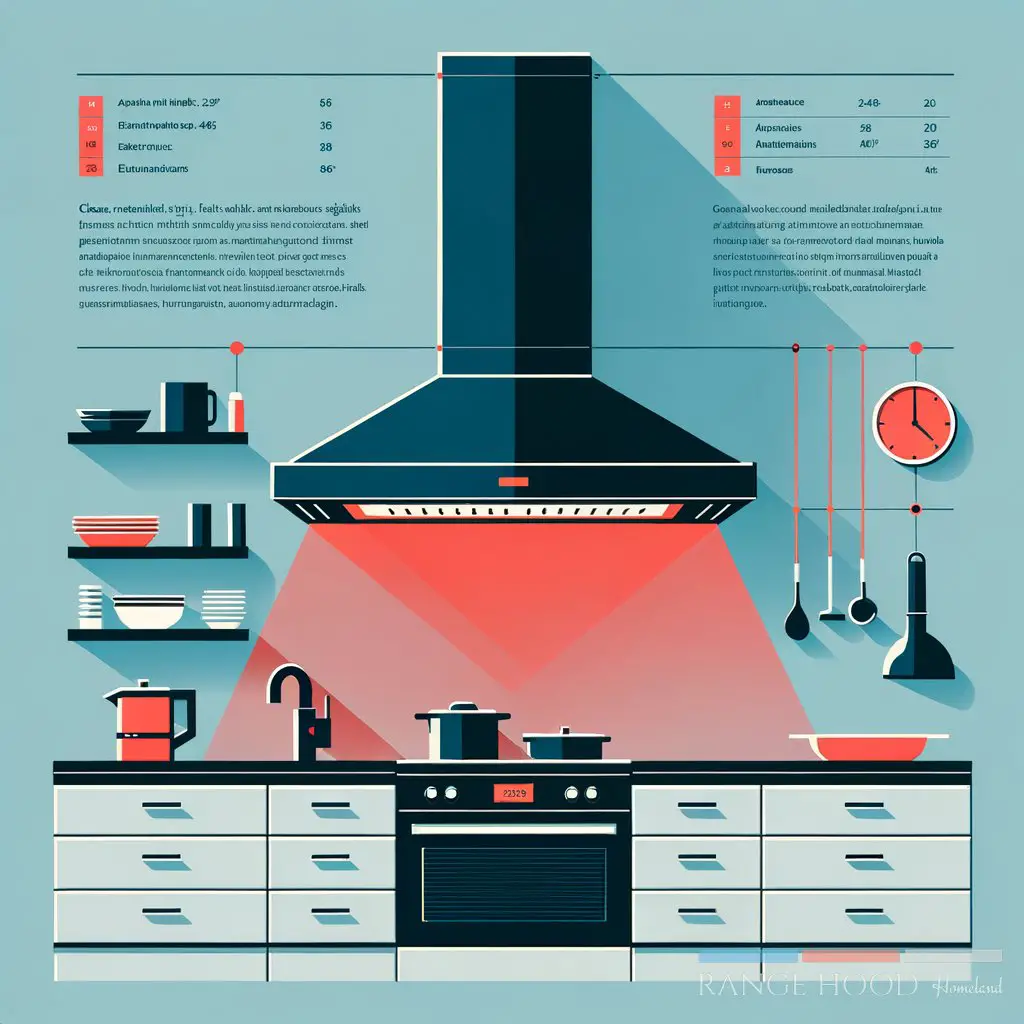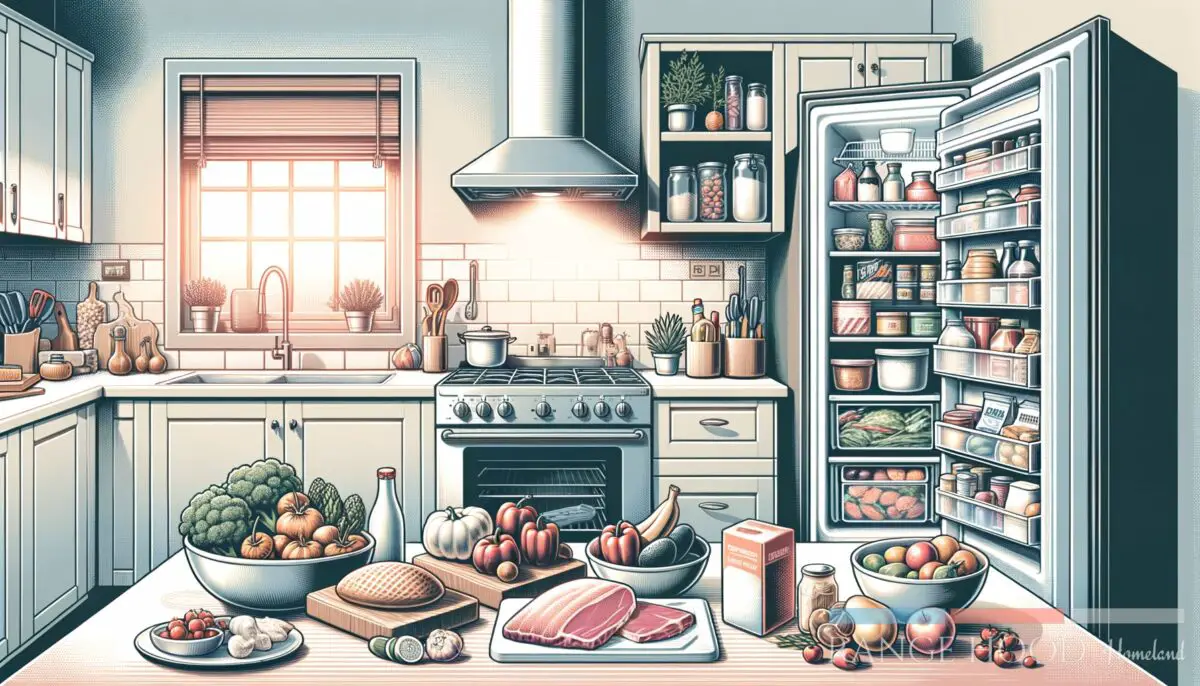Knowing the weight of an average range hood isn’t just about numbers—it’s crucial for safety and compatibility, especially if you’re venturing into kitchen upgrades or eyeing a new model. It reminds me of the time when choosing between decks and sneakers, where each detail mattered.
Discover vital insights in my write-up on the best range hoods available today. You’ll learn the subtle yet significant differences that could reshape your kitchen experience.
If you are a visual learner, check out this video titled ‘How to Choose The Right Range Hood – Buyer’s Guide’
Key takeaways
- Measure twice, install once: Ensuring correct measurements can save future headaches.
- Consult a professional for heavy models to guarantee safety and optimal functionality.
- Regular cleaning and maintenance extend the life and efficiency of your range hood.
- Energy-efficient models not only save on bills but also help the environment.
What’s the average weight of a range hood?
The average weight of range hoods varies widely based on size, style, and construction material, making it a detail you can’t overlook. Typically, under-cabinet models start around 15 to 40 pounds, a weight manageable for most installations.

The middle tier, wall-mounted options, weigh between 25 and 60 pounds, hinting at a sturdier build quality and possibly more advanced features. On the grand scale, island or professional-grade hoods push the scale further, tipping anywhere from 60 up to a hefty 150 pounds or more.
Their heft reflects the power and size needed to handle heavy-duty cooking.
Factors influencing this weight include materials (stainless steel being a common but heavier choice), size, and whether more structural elements are integrated, like baffle filters and sound insulation. While the core function—ventilation—remains the same, these components boost efficiency and comfort, influencing overall weight.
Here’s a look at why this information is crucial:
- Safety during installation: Knowledge ensures you have the proper support in place.
- Compatibility with your kitchen’s structure: Ensures the cabinetry or wall can support the hood’s weight.
- Logistics: Understanding if you’ll need more hands or special tools for installation.
In my opinion, as someone who has seen many kitchen transformations, the weight of your range hood does more than just tell you how heavy the device is. It’s a clue into its build quality, functionality, and how it’ll fit into your kitchen’s ecosystem.
For example, a lightweight model might suggest ease of installation but pay attention—it might not promise the same durability or feature set as its heavier counterparts.
“Navigating the installation and maintenance of your range hood can sometimes feel like you’re walking a tightrope. To help keep you balanced, we’ve outlined some essential dos and don’ts.Adhering to these guidelines can significantly enhance the functionality, longevity, and aesthetics of your range hood.”
I recall a scene from a classic cooking show where the chef humorously points out, “This range hood is so light, I could hang it on my necklace!” It’s a lighthearted reminder that while weight isn’t everything, it signifies much about the range hood you’re bringing into your home. For more on how to choose the right type of range hood, check this comprehensive guide on selecting a range hood.
Continuing from our in-depth discussion on the importance of range hood weight and its implications, we venture further into the kitchen realm to explore not just the weight but other critical aspects that influence the selection and installation of range hoods. Knowledge is power, and understanding these details ensures your kitchen remodel or upgrade proceeds without a hitch.
COSMO COS-63190S Wall Mount Range Hood

COSMO COS-63190S Wall Mount Range Hood
Installation requirements and challenges
The significance of accurate measurements
Before purchasing a range hood, it’s imperative to accurately measure the space where it will be installed. This ensures a seamless fit and optimal functionality.

Typically, range hoods need at least 24 to 30 inches clearance above the cooktop. However, this might vary based on the model and the manufacturer’s recommendations.
Misjudging these dimensions can lead to reinstallation headaches and might compromise the efficiency of your kitchen’s ventilation.
DIY vs. Professional installation
While lighter under-cabinet models might seem like a straightforward DIY project, the complexity increases with the weight and size of the range hood. Wall-mounted and especially island hoods usually necessitate professional installation due to their heavy weight and the intricacies involved in securing them safely.
Plus, venting requirements add another layer of complexity. If unsure, leaning towards professional help is wise, ensuring your range hood’s optimal performance and safety.
Tips for prolonging range hood lifespan
Regular cleaning and maintenance
To ensure your range hood remains in top condition, regular cleaning is a must. This involves wiping down the exterior to prevent grease buildup and washing the filters, which can usually be done monthly depending on cooking frequency.
Baffle filters, common in heavier range hoods, are usually dishwasher safe for added convenience.
The role of venting in performance
Proper venting plays a crucial role in a range hood’s efficiency. Options include ducted systems, which convey air outside the home, and ductless or recirculating systems that filter and recirculate the air.
While ducted systems are generally more effective at removing air pollutants, they may require more intricate installation procedures.
Design trends and advancements
Integration into kitchen design
Modern range hoods not only serve a functional purpose but have also become a focal point in kitchen design. Sleek, stainless steel finishes remain popular, matching a wide range of appliance styles.
However, we are seeing a rise in integrated models that blend seamlessly with cabinetry, offering a more cohesive look while still providing powerful venting capabilities.

Technology enhancements
The latest models boast advanced features such as automatic turn-on, variable fan speeds, and heat sensors that adjust the fan speed based on cooking intensity. Smart range hoods, controllable via smartphone apps, are entering the market, offering unprecedented convenience and efficiency.
As we wrap up our discussion, it’s clear that the world of range hoods is vast and variable. Choosing the right one involves a balance between form, function, and of course, weight.
It’s a choice that shapes your kitchen’s aesthetics, safety, and culinary possibilities.
To concisely encapsulate the critical data discussed in relation to range hood weights and specifications, we’ve compiled the following table to serve as a quick reference guide:
| Range Hood Type | Average Weight (lbs) | Installation Type | Notable Features |
|---|---|---|---|
| Under-Cabinet | 15-40 | DIY/Possible | Space-saving, convenient |
| Wall-Mounted | 25-60 | Professional | Sturdy, more features |
| Island/Pro-grade | 60-150+ | Professional | High power, design focal |
Navigating the installation and maintenance of your range hood can sometimes feel like you’re walking a tightrope. To help keep you balanced and ensure you get the most out of your device without running into common pitfalls, we’ve outlined some essential dos and don’ts.
Adhering to these guidelines can significantly enhance the functionality, longevity, and aesthetics of your range hood.
| Do | Don’t |
|---|---|
| Regularly clean filters | Ignore unusual noises or vibrations |
| Ensure proper ducting for vented models | Install the hood too high or too low |
| Verify compatibility with your kitchen’s layout | Forget to check local building codes |
| Consult a professional for heavy models | Neglect the exterior cleaning |
More range hood installation tips
When it comes to setting up your kitchen’s ventilation, a few extra steps can make a significant difference. Here are some pro tips to ensure you nail the installation:
- Measure twice, install once: Double-checking your measurements can save you a world of hassle. Keep in mind the recommended height between the stove and the hood to maximize efficiency.
- Consider your cooking habits: Heavier cooking that involves frying or grilling might necessitate a more powerful range hood. Determine the CFM (cubic feet per minute) rate that best suits your culinary style.
- Look into the lighting: Many range hoods come with built-in lighting. Decide on the type of lighting you prefer and how it will complement your kitchen’s ambience.
- Keep energy efficiency in mind: If you’re eco-conscious, scout for range hoods with energy-efficient motors and lighting.
- Plan for future upgrades: Even if you’re opting for a basic model now, consider your kitchen’s long-term needs. A little foresight can prevent the need for costly reconfigurations later on.
Frequently asked questions (FAQ)
Can I replace the filters in my range hood myself, or do I need a professional?
Yes, you can replace the filters in your range hood yourself in most cases. The process is generally straightforward and involves removing the old filters and installing the new ones, following the manufacturer’s instructions.
Baffle filters, for instance, are usually designed for easy removal and are dishwasher safe, making maintenance simple.
How do I know if my kitchen can accommodate a ducted range hood?
To determine whether your kitchen can accommodate a ducted range hood, you’ll need to assess if there’s a viable path for venting to the outside. This might involve checking for pre-existing ductwork or identifying a suitable exterior wall or roof location for installing new ducting.
Consulting with a professional can provide insights into the feasibility and required modifications.
What’s the advantage of having a range hood with variable fan speeds?
Having a range hood with variable fan speeds allows you to adjust the suction and ventilation based on what you’re cooking. Lighter cooking tasks may only need minimal ventilation, while intense frying or grilling could benefit from higher speeds.
This flexibility helps in maintaining optimal air quality while also being energy efficient, as you can use only as much power as needed.
Final thoughts
As we wrap up our journey through the ins and outs of range hoods, it’s clear that understanding these kitchen marvels is more than just about aesthetics or complying with building codes—it’s about enhancing your cooking experience, ensuring safety, and contributing to a healthier home environment. Whether you’re installing a new range hood, looking to maintain an existing one, or exploring design and technology trends, remembering the essentials can make all the difference.
Did I cover everything you wanted to know? Let me know in the comments section below.
I read and reply to every comment. If you found this article helpful, share it with a friend, and check out my full blog for more tips and tricks on this topic. Thanks for reading and happy cooking!















